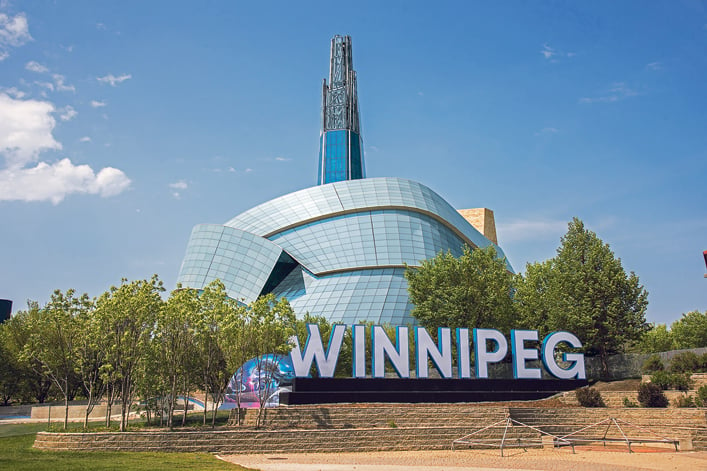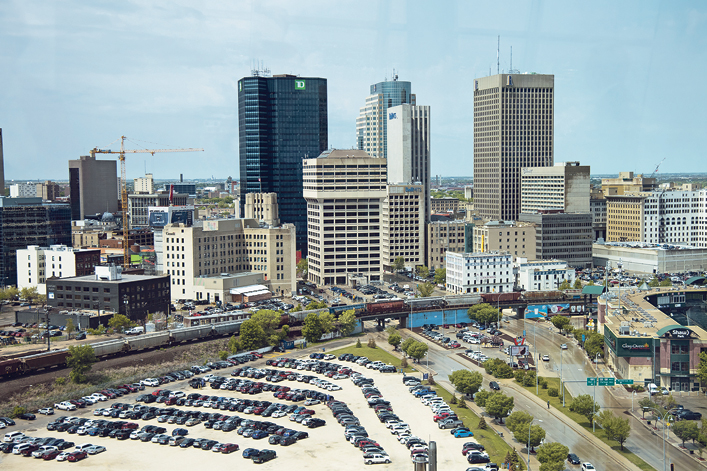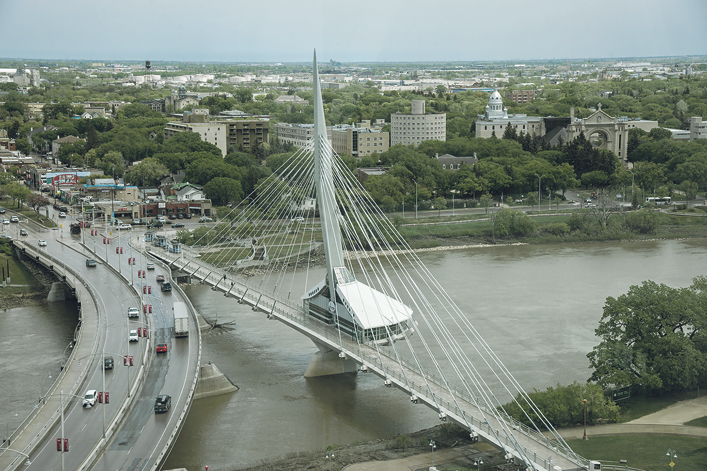If the Canadian Museum for Human Rights looks familiar, it may be because the unusual-looking building appears on our $10 bill.
The distinctive architecture is not the only unusual feature. Unlike other museums that primarily display artifacts, this one is more about ideas. It’s the first of its kind in the world dedicated to human rights, and the only national museum outside the National Capital Region around Ottawa.
Situated in the historic Forks area of Winnipeg, it ranks among Manitoba’s top attractions.

As we walked through the doors, we couldn’t help but think that this would be a depressing place, considering the overwhelming number of human rights problems in the world. However, it turned out to be the opposite. While the bad stuff is certainly there, the strongest message is one of hope. As the museum puts it, your visit takes you on a journey from darkness to light.
Many years in the making, the museum faced its share of controversies, from the $350 million price tag to complaints by various ethnic groups and cultures as to how historical events affecting them are portrayed. With such difficult subject matter, controversy comes with the territory.
The museum’s 12 galleries look at the history of human rights through the ages. Some of the world’s darkest atrocities are examined such as the Holocaust, forced starvation during the Holodomor in Ukraine, and the Rwandan genocide. But as we progress through the exhibits on different levels, the mood changes as galleries examine positive turning points in history, how people have made a difference in advancing rights and ways to inspire change.

A large part of the museum is devoted to Canada’s experience with human rights, both good and bad. Canada has been a leader in human rights legislation but has also gone through numerous negative episodes such as the expulsion of the Acadians, internment of Japanese Canadians during the Second World War and the abuse and attempted assimilation of First Nations peoples at Indian residential schools.
One exhibit features Viola Desmond, a black woman from Nova Scotia who was arrested because she defied discrimination by sitting in the whites-only section of a racially segregated movie theatre. The new $10 bill now features her portrait, along with the CMHR.

Another gallery deals with honourary Canadian citizens such as Nelson Mandela, the Dalai Lama, and Nobel Peace Prize winner Malala Yousafzai, the Pakistani girl who was shot for simply going to school.
An innovative way of handling controversy was the exhibit on Myanmar leader Aung San Suu Kyi. She too was made an honourary citizen, though her title was later revoked by Parliament because of the Myanmar military’s persecution of the Rohingya minority. She was still portrayed during our visit, but the lights were turned off on her display, with a sign indicating the reason.
Symbolism abounds everywhere. The different levels of the museum are connected by a series of ramps, which look like a hodge-podge of paths going every which way. The ramp network was purposely designed to look complex because the path to human rights is never straightforward.
Part of the visitor experience is the building itself with its curving lines, walls at unusual angles, and 1,300 panes of glass intended to resemble the wings of a dove. Various aspects of the architecture invoke the Canadian landscape, such as an icy mountain cap, or the grounds sown to native prairie grasses.
At the top is the Israel Asper Tower of Hope, named after media mogul Izzy Asper who spearheaded the museum project. From here we have sweeping views over the Red River, downtown Winnipeg, the Forks, and historic St. Boniface.
To get the most from your visit, it’s best to first take the optional 90-minute tour, which provides an excellent overview, then spend more time wandering around. Or you can download the free mobile app to a self-guided audio tour. For more details see the museum website www.humanrights.ca.



















